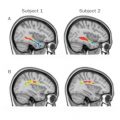随着PTE考生对PTE口语和PTE听力的重视,大家口语和听力的分数得到极大提高,但是PTE阅读渐渐成为考生们新的难题。墨尔本悉尼文波PTE特别为PTE考生们挑选了适合练习PTE阅读的文章,主题,内容,长度都与PTE阅读题中的文章相似。激活学过的词汇,更新新的词汇,提高阅读速度,全面提升自己的阅读能力。
Large-scale brain-like machines with human-like abilities to solve problems could become a reality, now that researchers have invented microscopic gadgets that mimic the connections between neurons in the human brain better than any previous devices.
The new research could lead to better robots, self-driving cars, data mining, medical diagnosis, stock-trading analysis and “other smart human-interactive systems and machines in the future,” said Tae-Woo Lee, a materials scientistat the Pohang University of Science and Technology in Korea and senior author of the study.
The human brain’s enormous computing power stems from its connections. Previous research suggested that the brain has approximately 100 billion neurons and roughly 1 quadrillion (1 million billion) connections wiring these cells together. At each of these connections, or synapses, a neuron typically fires about 10 times per second.
In principle, the human brain can perform about 10 quadrillion operations per second. In comparison, the world’s fastest supercomputer, Tianhe-2 in China, is capable of carrying out up to about 55 quadrillion calculations per second, according to the TOP500 project, which ranks the 500 most powerful computers in the world. However, previous research suggests that the human brain consumes only about 20 watts of power, which is barely enough to run a dim light bulb, whereas Tianhe-2 consumes about 17.8 megawatts of power, which is enough to run about 900,000 such light bulbs, TOP500 notes.
gadget 小玩意
mimic 模仿
neuron 神经元
stems from 发源于
synapse 突触
quadrillion 百万之四次方
megawatts百万瓦特





